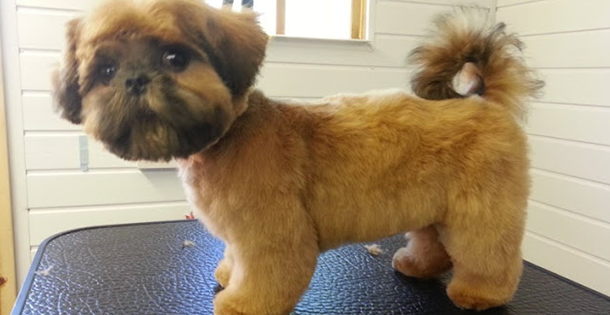When does a shih tzu stop being a puppy? Cute, playful, and awkward. The puppy stage of a shih tzu is one of the most fun, both for the owners and for the puppies.
It’s time to discover the world, start building a relationship with the family that owns the dog, and, of course, play a lot.
However, following the normal course of nature, the shih tzu will grow and mature: before you know it, your puppy will be turning into a beautiful adult dog.
But why is it important to be aware of your buddy’s growth rate? The answer is simple: as with humans, the different stages of a shih tzu’s life require different care.
So read on to learn when the puppy stops being a puppy, as well as the changes this development brings with it.
When the shih tzu reaches maturity
In the canine universe, several aspects vary according to the size and breed of each animal. The exact age at which the dog can be considered an adult is one of them.
Starting with small dogs like the shih tzu, Lhasa Apso, Yorkshire, Pug, and many others, these are the dogs that reach adulthood the fastest. When your pet is between 9 and 12 months old, you can consider yourself an adult dog owner.
It is worth remembering that this is a rule-based on the general average of dogs. Each pet has its particularities, which include its pace of growth and development.
For this reason, if the owner wants to identify the exact stage of life that his shih tzu is in, he can take advantage of an appointment with the vet to ask this question.
Changes and care
Now that you know when your shih tzu will stop being a puppy, it’s important to be aware of what changes in the pet’s routine when it leaves childhood behind.
The main difference is in the shih tzu diet.
When he is a puppy, it is essential that he be fed a specific food for this stage of life, since they are products developed with a focus on the needs of vitamins, proteins, and fats of the little ones.
Growing requires a lot of energy! In addition to its differentiated composition, it is also a food that has smaller and more rigid grains, to help strengthen teeth.
However, once the dog becomes an adult, its nutritional needs change, and adult dog food is ideal at this point.
In addition, the frequency of meals and the amount of feed is also different. While puppies eat 4 to 6 times a day, adults usually have two meals a day.
The amounts will depend a lot on the size of your pet. Do not hesitate to consult a vet to not be in doubt about the portions.
In addition to food, the dog’s activities also change. It is time to intensify the duration and distance of the walks, in addition to introducing training with more advanced orders, if that is the owner’s wish.
Nature is wise, and the evolution of each living being is a beautiful process that, in the case of our puppies, we are privileged to accompany.
Now that you too are a wise owner, enjoy your dog’s development by meeting his special needs at every age.
